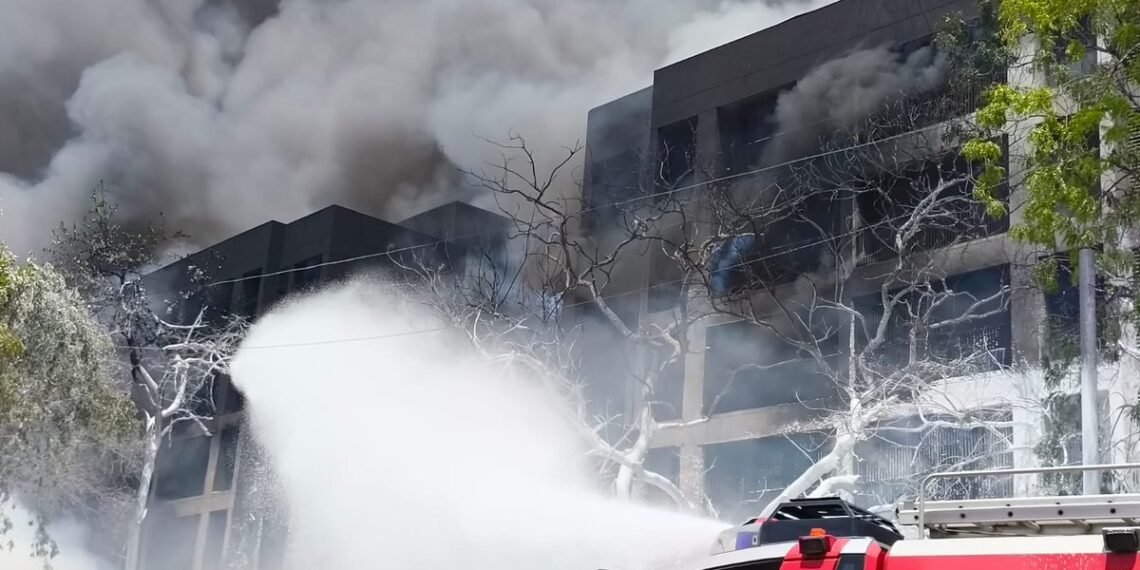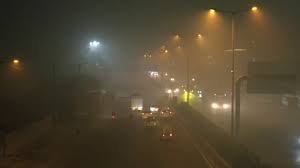The aircraft exploded shortly after takeoff, igniting 80 tonnes of jet fuel and reducing bodies to unidentifiable remains. Forensic DNA will now help families find closure.
By PC Bureau
Thursday, June 12: The smoldering wreckage of Air India Flight AI171 in Ahmedabad’s Meghaninagar tells a story of unimaginable loss—and a grim milestone in aviation history. At 1:38 PM IST today, the Boeing 787-8 Dreamliner, carrying 242 passengers and crew, crashed minutes after takeoff from Sardar Vallabhbhai Patel International Airport, becoming the first fatal accident involving the celebrated aircraft model since its debut in 2011. The plane, en route to London Gatwick, erupted into a fireball upon impact, fueled by nearly 80 tonnes of jet fuel, leaving most recovered bodies charred beyond recognition and casting a shadow over the Dreamliner’s once-pristine safety record.
As of 4:30 PM IST, National Disaster Response Force (NDRF) teams, local fire brigades, and police have pulled over 150 bodies from the debris near Forensic Cross Road and IGB Ground in Shahibaug. Ahmedabad Civil Hospital confirmed 47 fatalities by 2:30 PM IST, with over 90 others injured, many in critical condition. The ferocity of the blaze, described by rescuers as an “inferno,” has rendered most remains unidentifiable, forcing reliance on forensic DNA analysis. Hopes for survivors are fading, with hospital sources noting only the “miraculously lucky” could have endured such a catastrophe.
Air India Dreamliner crash flight AI171
A sad day for aviation @AirNavRadar
— Flight Emergency (@FlightEmergency) June 12, 2025
The Boeing 787 Dreamliner, known for its lightweight carbon-fiber construction, fuel efficiency, and long-range capabilities, had been a flagship of modern aviation. Designed to carry 242 to 290 passengers, it promised enhanced comfort and safety through cutting-edge systems like Synthetic Vision and Integrated Modular Avionics. Over 1,100 Dreamliners have been delivered globally, logging millions of flight hours without a single fatal crash—until today. Past incidents, such as lithium-ion battery fires in 2013 that prompted a brief grounding, were resolved without loss of life, reinforcing the aircraft’s reputation for resilience.
READ: Bird Strike or Engine failure May Have Triggered Ahmedabad Plane Crash: ExpertS
The Air India Dreamliner, registered as VT-ANB and operational since 2014, had no reported maintenance issues, according to preliminary records. Yet, something went catastrophically wrong. Pilots Captain Sumeet Sabharwal and First Officer Clive Kundar issued a brief MAYDAY call after reaching 625 feet, moments before the plane plummeted into a residential area, scattering debris across Ghoda Camp and IGB Compound. Eyewitnesses described a “deafening explosion” followed by thick black smoke that blanketed Meghaninagar. Initial reports suggest a possible tail strike during takeoff may have damaged critical systems, though the Directorate General of Civil Aviation (DGCA) cautions against speculation as it analyzes the flight’s black boxes alongside Boeing and the UK Air Accidents Investigation Branch.
The human toll is staggering. Among the passengers was former Gujarat Chief Minister Vijay Rupani, whose family awaits news of his fate, adding a poignant layer to the tragedy. A survivor, extracted from the wreckage, recounted to India Today a “violent shudder” before the crash, a haunting glimpse into the flight’s final moments. The crash site, now cordoned off, is a scene of devastation, with damaged homes prompting evacuations and temporary shelters in local schools.
Union Civil Aviation Minister Ram Mohan Naidu, speaking at Ahmedabad Civil Hospital, called the crash a “national heartbreak,” pledging full support for victims’ families and a rigorous investigation. Gujarat Chief Minister Bhupendra Patel, coordinating with NDRF teams, has announced ₹5 lakh ex gratia payments for families of the deceased. Prime Minister Narendra Modi, in a post on X, mourned the “devastating loss of lives,” assuring government aid. Air India’s toll-free helpline (1800-XXX-XXXX) is overwhelmed with calls from anguished relatives seeking clarity amid the grim recovery efforts.
The crash has reignited debates about aviation safety and urban planning, particularly the proximity of residential areas to Ahmedabad’s airport. Comparisons to the 1988 Indian Airlines Flight 113 crash in the same city underscore persistent concerns about runway safety and perimeter designs. On X, hashtags like #AhmedabadCrash and #AirIndiaTragedy capture a nation’s grief, with tributes to victims and calls for accountability flooding timelines.
For the aviation world, the loss of the Dreamliner’s perfect safety record is a sobering moment. The DGCA anticipates a preliminary report within 48 hours, but a full investigation may take months. As Ahmedabad grieves under floodlights, the charred remains of Flight AI171 stand as a stark reminder of the fragility of flight—and the enduring quest for answers in the face of tragedy.














